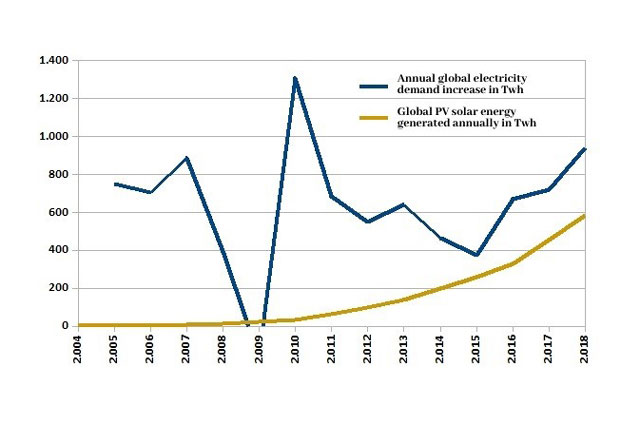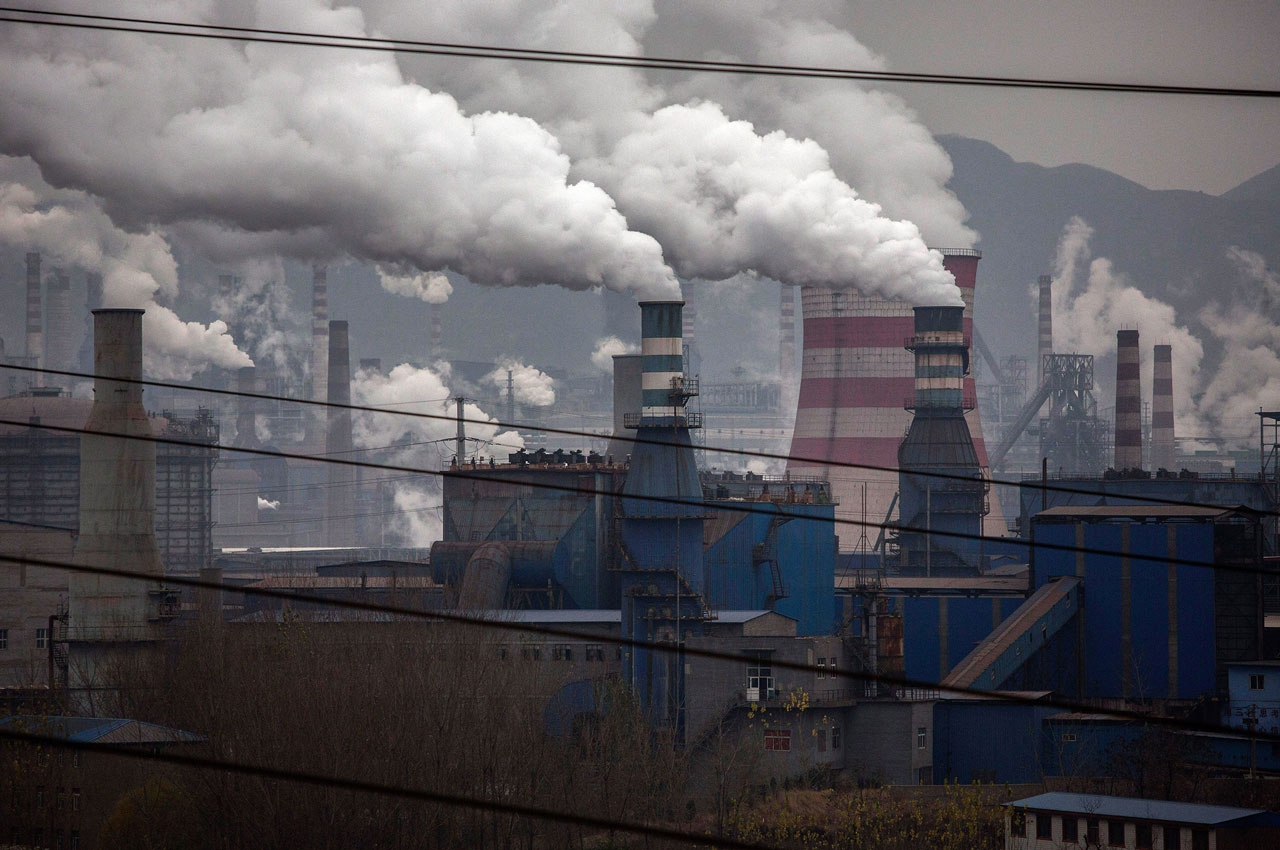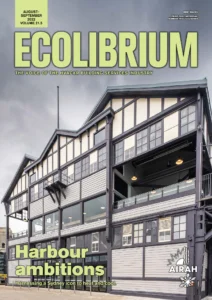Don’t call me a pessimist

When it comes to climate change, Professor William Rees believes he sees things as they are, describing himself as a realist.
This opinion piece from Professor William E Rees was originally posted at The Tyee in two parts, and is republished here with permission both from The Tyee and Professor Rees.
No one wants to be the downer at the party, and some would say that I am an unreformed pessimist. But consider this – pessimism and optimism are mere states of mind that may or may not be anchored in reality. I would prefer to be labelled a realist, someone who sees things as they are, who has a healthy respect for good data and solid analysis (or at least credible theory).
Why is this important? Well, if Greta Thunberg and her followers are to inspire more than emotional release about climate change, the world needs to face some hard facts that suggest we are headed towards catastrophe. At the same time, scepticism is the hallmark of good science; realists too must be open to the challenge posed by new facts.
So I present an unpopular but fact-based argument in the form of two “Am I wrong?” queries. If you accept my facts, you will see the massive challenge we face in transforming human assumptions and ways of living on Earth.
Question 1: The modern world is deeply addicted to fossil fuels, and green energy is no substitute. Am I wrong?
We can probably agree that techno-industrial societies are utterly dependent on abundant cheap energy just to maintain themselves — and even more energy to grow. The simple fact is that 84 per cent of the world’s primary energy today is derived from fossil fuels.
It should be no surprise, then, that carbon dioxide from burning fossil fuels is the greatest metabolic waste by weight produced by industrial economies. Climate change is a waste-management problem!
Cheap fossil energy enabled the world to urbanise, and this process is continuing. The UN expects the urban population to rise to 6.7 billion – 68 per cent of humanity – by 2050. There will be 43 mega-cities with more than 10 million inhabitants each as early as 2030, mostly in China and other Asian countries.
“The overall increase in demand for energy is expected to be greater than the total contribution from all renewable sources combined”
Building out these and hundreds more large cities will require much of the remaining allowable carbon budget. Moreover, the current and future inhabitants of every modern city depend absolutely on the fossil-fuelled productivity of distant hinterlands and on fossil-fuelled transportation for their daily supplies of all essential resources, including water and food.
Fact: Urban civilisation cannot exist without prodigious quantities of dependable energy.
All of which generates a genuine emergency. By 2018, the combustion of fossil fuel alone was pumping 37.1 billion tonnes of carbon dioxide into the atmosphere. Add to this the net carbon emissions from land clearing (soil oxidation) and more vigorous forest fires, and we can see why atmospheric carbon dioxide concentrations reached an all-time high of 415 parts per billion in early 2019. This is 48 per cent above pre-industrial levels, and concentrations are rising exponentially.
And, of course, everyone with an active brain cell is aware that CO2 is the main human-related driver of global warming and associated climate change.
Cue the techno-optimists’ chorus: “Not to worry, all we have to do is transition to green renewable energy!”
In fact, there is plenty of superficial support for the notion that green tech is our saviour. We are told repeatedly that the costs of providing renewable energy have fallen so low that it will soon be practically free.
Australian professors Andrew Blakers and Matthew Stocks say, “Solar photovoltaic and wind power are rapidly getting cheaper and more abundant – so much so that they are on track to entirely supplant fossil fuels worldwide within two decades.”
Luckily, the transition won’t even take up much space: UC Berkeley professor Mehran Moalem argues that “an area of the Earth 335km by 335km with solar panels … will provide more than 17.4TW power… . That means 1.2 per cent of the Sahara Desert is sufficient to cover all of the energy needs of the world in solar energy.” (Someone should remind Prof. Moalem that, even if such an engineering feat were possible, a single sandstorm would bury the world’s entire energy supply.)
The first problem with such claims is that despite rapid growth in wind and solar generation, the green energy transition is not really happening. The chart below shows that in most recent years (except 2009, following the 2008 Global Financial Crisis), the uptick in global demand for electrical energy exceeded the total output of the world’s entire 30-year accumulation of solar power installations. Between 2017 and 2018, the demand increase outpaced total solar supply by 60 per cent; two years’ demand increase absorbs the entire output of solar and wind power combined.


As long as the growth in demand exceeds additions to supply from renewables, the latter cannot displace fossil fuels even in electricity generation – and remember, electricity is still less than 20 per cent of total energy consumption, with the rest being supplied mostly by fossil fuels.
Nor is any green transition likely to be cheap. The cost of land is substantial and, while the price of solar panels and wind turbines have declined dramatically, this is independent of the high costs associated with transmission, grid stabilisation and systems maintenance.
Consistently reliable wind and solar electricity requires integrating these sources into the grid using battery or pumped hydro storage, back-up generation sources (e.g., gas turbines, cruise-ship-scale internal combustion engines, etc.,) and meeting other challenges that make it more expensive.
Also problematic is the fact that wind/solar energy is not really renewable. In practice, the life expectancy of a wind turbine may be less than 15 years. Solar panels may last a few years longer but with declining efficiency, so both turbines and panels have to be replaced regularly at great financial, energy and environmental cost. Consider that building a typical wind turbine requires 817 energy-intensive tonnes of steel, 2,270 tonnes of concrete and 41 tonnes of non-recyclable plastic. Solar power also requires large quantities of cement, steel and glass as well as various rare-earth metals.


World demand for rare-earth elements – and Earth-destroying mining and refining – would rise 300 per cent to 1,000 per cent by 2050 just to meet the Paris goals. Ironically, the mining, transportation, refining and manufacturing of material inputs to the green energy solution would be powered mainly by fossil fuels (and we’d still have to replace all the machinery and equipment currently running on oil and gas with their electricity-powered equivalents, also using fossil fuel). In short, even if the energy transition were occurring as advertised, it would not necessarily be reflected in declining CO2 emissions.
If we divide 2018 into energy segments, oil, coal and natural gas powered the globe for 309 out of 365 days, hydro and nuclear energy gave us 41 days, and non-hydro renewables (solar panels, wind turbines, biomass) a mere 15 days. If the race is towards a decarbonised finish line by 2050,we’re still pretty much stalled at the gate.
Fact: Despite the hype about the green energy revolution and enhanced efficiency, the global community remains addicted to fossil energy, and no real cure is on the horizon.
As I say, please do tell me I’m wrong.
“World demand for rare-earth elements – and Earth-destroying mining and refining – would rise 300 per cent to 1,000 per cent by 2050 just to meet the Paris goals”
Question 2: Human nature and our methods of governance are proving incapable of saving the world. We need to “get real” about climate science. Am I wrong?
Remember the self-congratulatory hubbub following “successful” negotiation of the Paris climate accord in 2015? Was all that ebullient optimism justified?
Consider that in the past 50 years, there have been 33 climate conferences and a half dozen such major international agreements – Kyoto, Copenhagen, Paris and Edinburgh the most recent – but none has produced even a dimple in the curve of rising atmospheric CO2 concentrations.
And things are not about to change dramatically. The 2019 Energy Information Administration International Energy Outlook reference case projects global energy consumption to increase 45 per cent by 2050. On the plus side, renewables are projected to grow by more than 150 per cent, but, consistent with the trend I rudely pointed out earlier, the overall increase in demand for energy is expected to be greater than the total contribution from all renewable sources combined.
Fact: Without a massive rapid course correction, CO2 emissions will continue to climb. This threatens humanity with ecological and social catastrophe as much of Earth becomes uninhabitable.
Carbon dioxide and other greenhouse gas increases have already boosted global temperature by approximately 1°C, mostly since 1980. Climate scientists tell us that the world is currently on track to experience 3 to 5°C degrees warming. However, 5°C warming would be catastrophic, likely fatal to civilised existence. Even a “modest” 3°C implies disaster – enough to inundate coastlines, empty megacities, destroy economies and destabilise geopolitics.


Parties to the United Nations Framework Convention on Climate Change therefore committed in 2015 to hold the rise in global average temperatures to “well below 2°C above pre-industrial levels and pursue efforts to limit the temperature increase to 1.5°C above pre-industrial levels.”
But don’t relax just yet. Those commitments made in Paris – the so-called Nationally Determined Contributions or NDCs – comprise only a third of the reductions needed to limit warming to 2°C. Even if fully met, they put us on track for a potentially catastrophic 3°C plus mean global warming.
Systems dynamics confounds the issue. There is a decades-long lag between GHG cause and warming effect because of ocean thermal inertia – the seas absorb 90 per cent of accumulating heat but warm slowly, keeping atmospheric temperatures down. Even if held constant, present GHG concentrations commit the world to an additional 0.3 to 0.8°C warming this century, enough to overshoot the 1.5°C limit.
The rise of C02 in the atmosphere has continued unabated for 60 years, regardless of policies by countries and the UN said to address climate change.
There are more reasons to be concerned. Recent analyses suggest that “biogeophysical feedback processes” tied to such processes as permafrost melting, methane hydrate releases and the destruction of tropical and boreal forests may accelerate a cascade of feedbacks pushing the planet irreversibly onto a “Hothouse Earth” pathway.
To meet the Paris challenge of keeping the mean global temperature increase to less than 2°C means cutting CO2 emissions to almost half of 2010 levels and doing so by 2030. It also means completely decarbonising the economy by 2050.
This, in turn, implies wholesale transformations of social and physical communities and dramatic changes in material life-styles.
However, the current pace of shift away from fossil fuels and lower energy consumption is not remotely adequate. In fact, global energy use and carbon emissions are rising exponentially at the same rate they were four decades ago.
Which presents a conundrum: Reducing fossil fuel use on a vastly sped-up schedule, in the absence of adequate substitutes and a comprehensive wind-down plan, would soon produce some combination of inadequate energy supplies, broken supply lines, reduced production, declining incomes, rising inequality, widespread unemployment, food and other resource shortages, at least local famines, civil unrest, abandoned cities, mass migrations, collapsed economies and geopolitical chaos.
What politician is likely to let this scenario unfold? Would the public tolerate it?
As economists have long recognised, humans are spatial, temporal and social discounters – we naturally favour the here and now, and close relatives and friends, over distant places, merely possible futures and total strangers. Under what circumstances would hundreds of millions of people in scores of countries with disparate political philosophies and political ideologies – people who currently enjoy the “good life” – be induced simultaneously to risk wrecking their comfortable lives to stave off a climate or eco-crisis that many are not convinced is happening and, even if it is, it is perceived likely mainly to affect other people somewhere else?
And keep in mind, the world is committed to accommodating several additional billions who have yet to join the energy-addicted consumer party but are pounding on the door to be let in.


It gets worse. Neoliberal economics is ecologically blind. Even Nobel laureate economists argue that we must maintain allegiance to growth and the illusion of “rescue-by-technology” so the next generation has the wealth and techno-mechanics to mitigate the consequences of climate change. Consistent with this illusory reasoning, many national and corporate leaders interpret the threat of climate chaos as an investment opportunity.
Politically acceptable approaches to reducing carbon emissions discussed at climate talks include technical and organisational capacity-building, wind turbines, various solar technologies, “smart city” infrastructure, electric vehicles, urban rapid transit, yet-to-be-developed carbon capture and storage and other “climate-safe technologies” – i.e., anything that would require major investment and create so-called green jobs (read “further economic growth and profit-making potential”).
Not on the table are ecological tax reform (beyond investment incentives and carbon taxes), structural changes to the economy that would lower consumer demand and reduce energy and material throughput, policies for income/wealth redistribution, major lifestyle changes, or strategies to reduce human populations.
Perversely then, policy for climate-disaster avoidance seems designed to serve the capitalist growth economy and make the latter appear as the solution rather than cause of the problem. “Unfortunately,” as University of Vienna public policy professor Clive Spash points out, “many environmental non-governmental organisations have bought into this illogical reasoning.”
And this is why the international community – despite the Paris accord, Greta Thunberg, climate strikes and mass public protests – seems determined to stay its growth-driven fossil-fuelled course.
In these circumstances, the world can anticipate more and longer heat waves/droughts, desertification, tropical deforestation, melting permafrost, methane releases, regional water shortages, failing agriculture, regional famines, rising sea levels, the flooding (and eventual loss) of many coastal communities, abandonment of over-heated cities, civil unrest, mass migrations, collapsed economies and possible geopolitical chaos.
Eleven steps
So, where might we go from here? A rational world with a good grasp of reality would have begun articulating a long-term wind-down strategy 20 or 30 years ago. The needed global emergency plan would certainly have included most of the 11 realistic responses to the climate crisis listed here –which, even if implemented today would at least slow the coming unravelling. And no, the currently proposed Green New Deal won’t do it.
Here, then, is what an effective “Green New Deal” might look like:
- Formal recognition of the end of material growth and the need to reduce the human ecological footprint
- Acknowledgement that, as long as we remain in overshoot – exploiting essential ecosystems faster than they can regenerate – sustainable production/consumption means less production/consumption
- Recognition of the theoretical and practical difficulties/impossibility of an all-green quantitatively equivalent energy transition
- Assistance to communities, families and individuals to facilitate the adoption of sustainable lifestyles (even North Americans lived happily on half the energy per capita in the 1960s that we use today)
- Identification and implementation of strategies (e.g., taxes, fines) to encourage/force individuals and corporations to eliminate unnecessary fossil fuel use and reduce energy waste (half or more of energy “consumed” is wasted through inefficiencies and carelessness)
- Programs to retrain the workforce for constructive employment in the new survival economy
- Policies to restructure the global and national economies to remain within the remaining “allowable” carbon budget while developing/improving sustainable energy alternatives
- Processes to allocate the remaining carbon budget (through rationing, quotas, etc.) fairly to essential uses only, such as food production, space/water heating, inter-urban transportation
- Plans to reduce the need for interregional transportation and increase regional resilience by re-localising essential economic activity (de-globalisation)
- Recognition that equitable sustainability requires fiscal mechanisms for income/wealth redistribution
- A global population strategy to enable a smooth descent to the two to three billion that could live comfortably indefinitely within the biophysical means of nature.
“What? A deliberate contraction? That’s not going to happen!” I hear you say. And you are probably correct. It should by now be clear that H. sapiens is not primarily a rational species.
But in being correct you only prove me correct. Disastrous climate change and energy shortages are near certainties in this century, and global societal collapse a growing possibility that puts billions at risk.
Now I may be wrong but, if so, please tell me why … Please.

This article appears in Ecolibrium’s August-September 2022 edition
View the archive of previous editions
Latest edition
See everything from the latest edition of Ecolibrium, AIRAH’s official journal.





